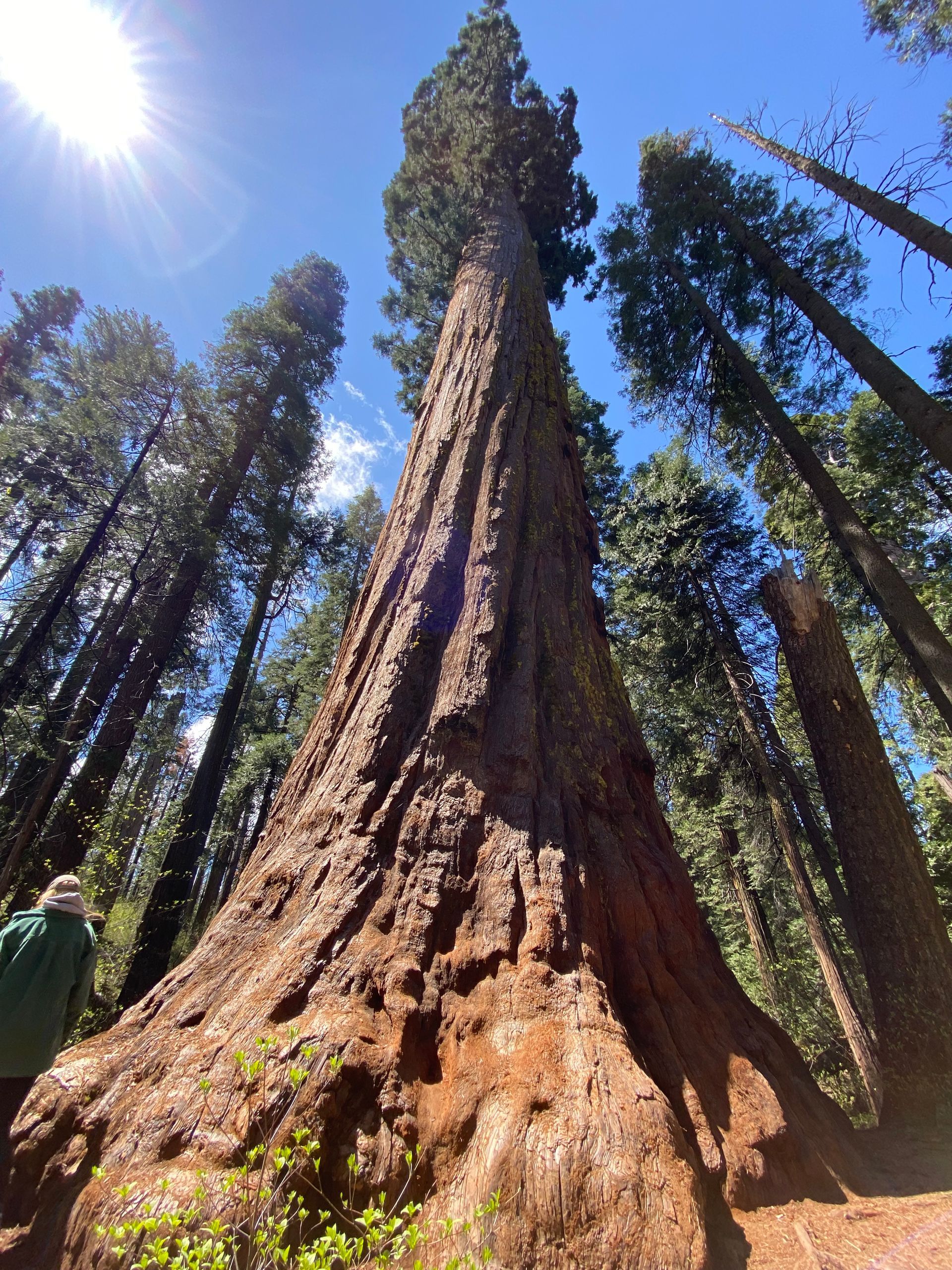Tuleyome 's Science Corner: California's Big Trees

Giant Sequoia (Sequoiadendron giganteum)
Not only does California have the oldest living trees (Great Basin Bristlecone Pine, Pinus longaeva) and the tallest living trees (Coastal Redwood, Sequoia sempervirens) but we also have the largest living trees – The Giant Sequoia. The giant sequoia (Sequoiadendron giganteum) has many common names but the best one is simply “big trees” given to them by John Muir. It is the only surviving species in the genus Sequoiadendron and the most massive tree on Earth, in fact they are the largest living things ever to exist on Earth. The fossil record for the redwood family dates back 180 million years to the dinosaurs and individuals can live over 3,000 years. The oldest living giant sequoia is about 3,250 years old. Once wide spread, today they’re found in only 75 groves on the western slope of the Sierra Nevada, always near a reliable source of water. They are listed as an endangered species and only about 80,000 trees remain.
Giant sequoias have both male and female cones. The roughly two-inch long female cones produce the seeds but that can only happen if pollen from the much smaller male cones is blown close enough to make contact with the female cones. Once fertilized, the seeds stay within the cone for two years until they are mature. When mature, the seeds are still so tiny that they resemble a flake of oatmeal and weigh only 1/6,000 of an ounce. After they mature, the cones stay on the trees for 20 years or more until they are knocked off by wind, snow or even a small native squirrel, called a chickaree. A mature tree may produce 40,000 cones all at once but releases only about 1,500 a year, each cone containing about 200 tiny seeds. Once on the ground most seeds are released by the heat of fire or insect activity. Seedlings can begin to bear viable cones after about 12 years.
Although mature trees can be nearly 300 feet tall, their roots only extend down six to eight feet under the soil surface. Rather than having a long tap root like oaks do, the roots of the giant sequoia spread out laterally, sometimes to an area the size of an acre. This allows small feeder roots to absorb nutrients and water from the surrounding soil. The wide network of roots along with their sturdy, symmetrical trunks allow the giant trees stability. If the tree is weakened by burn scars or other injuries, or the roots are eroded or weakened by fungus, the tree can emphatically come crashing down in a severe wind storm. In fact, falling over is one of the few things that can kill a giant sequoia.
In many ways the giant sequoia has adapted to live with fire. The bark is thick, nearly three feet thick on some trees, fibrous and furrowed and the sap contains high levels of tannic acid; both which help protect the trees from fire. The tannins also cause fallen trees to take a very long time to decompose, sometimes several hundred years or more. The massive branches, some six feet in diameter are located high above the ground, closer to the top of the tree, to help keep flames from reaching the crown. The shape of the trunk also helps other burning trees to roll off if they happen to fall on a giant sequoia.
Not only have giant sequoias evolved with the presence of fire, they actually benefit from small, frequent fires. Fire burns much of the debris on the ground that can hamper a tiny seed from germinating and receiving sunlight on the forest floor. The heat from fires also signals the cones to release their seeds. When settlers came to California, fires were suppressed resulting in a high fuel load and more severe, uncontrollable fires that could damage the giant trees. Three major fires, the Castle Fire (2020), the KNP Complex Fire and the Windy Fire (both 2021) are responsible for killing 14,000 of the 80,000 remaining giant sequoias.
Giant sequoias do not grow in pure stands like coastal redwoods do. They occur as part of the Sierra mixed conifer forest alongside sugar pines (Pinus lambertiana), white firs (Abies concolor), incense cedars (Calocedruus decurrens), ponderosa pines (Pinus ponderosa), mountain dogwood (Cornus nuttallii), Pacific yew (Taxus brevifolia) and hazelnut (Corylus cornutta var. californica) between 2,000 and 7,000 feet in elevation.
There are several places to visit the giant trees but the closest is the Calaveras Big Trees State Park located in Arnold, only a two-hour drive from Sacramento.
-Kristie Ehrhardt; kehrhardt@tuleyome.org
Tuleyome Land Conservation Program Manager
RECENT ARTICLES






